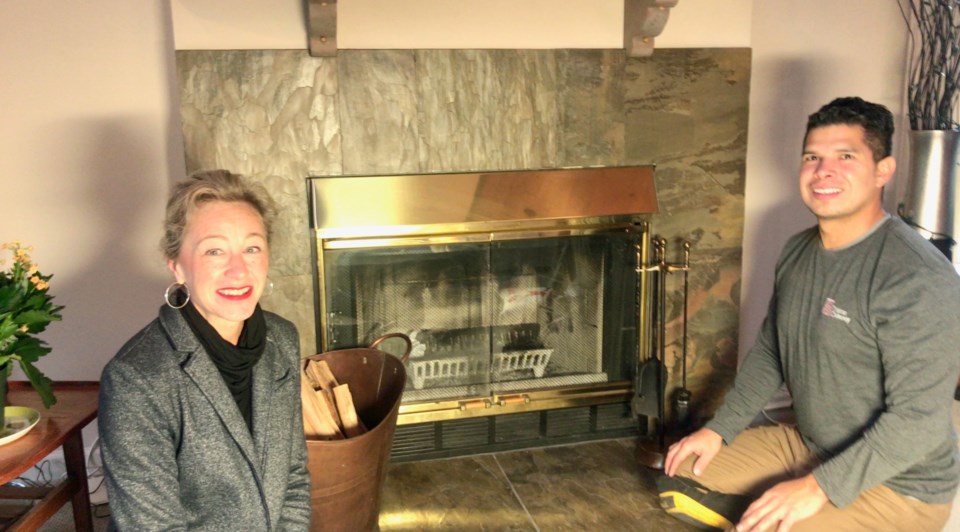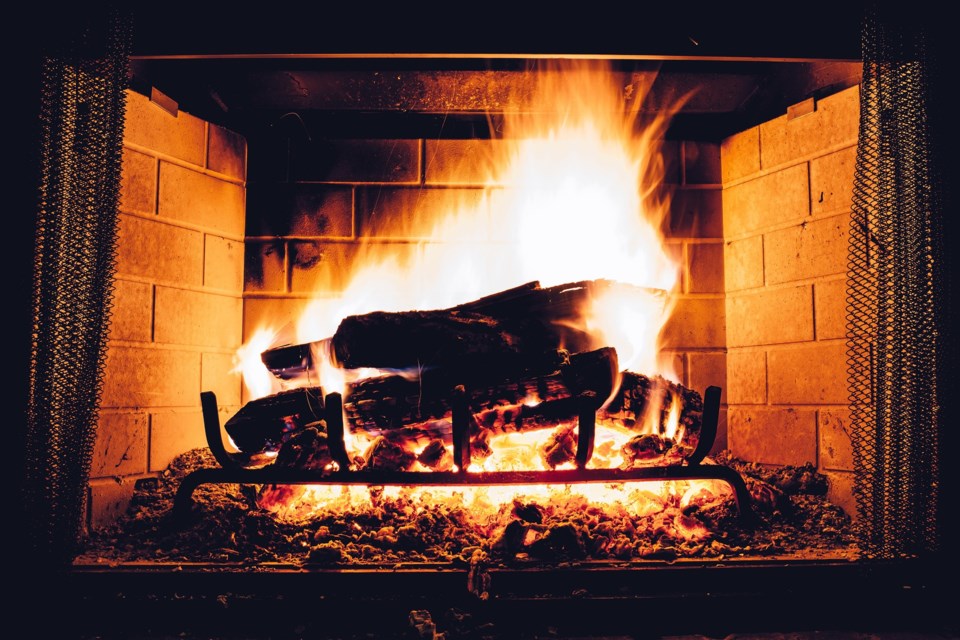Who doesn’t love a warm fire on a cold, rainy, night. One of the many benefits of living on Bowen Island is that most homes have a fireplace or wood stove.
If you have either, you need to be familiar with WETT certification. All home insurance companies require at least a level one “Wood Energy Technical Transfer” or WETT inspection (wettinc.ca). As Richard Chase, a level one WETT Inspector on Bowen Island, explains pyrolysis and creosote are serious concerns.
So how do you contain fires in your home so that they’re safe?
Creosote is a highly combustible, black or brown, residue that can build up inside your chimney. Smoke water vapor, gases, and unburned wood particles are the by-products of wood-burning fires and combustion. As these substances leave your fireplace or wood stove, they flow up into the relatively cooler chimney and condensation occurs. Creosote is the resulting residue and it can stick to the inner walls of your chimney.
As Chase notes, creosote ignites at 451 degrees [the same as paper], but can burn at temperatures easily exceeding 2,000 degrees Fahrenheit. According to the Chimney Safety Institute of America, that is hot enough to “melt mortar, crack tiles, cause liners to collapse and damage the outer masonry material.” The resulting inferno can quickly incinerate the chimney and create an eruption that can result in total property loss and death.
Always remember to use seasoned firewood.
Julian Tristan from Tristan Chimney recommends that for maximum safety and heat efficiency you always want to burn “seasoned” wood, as it lessens the chance of creosote build-up. Seasoned wood means that either it’s been treated or has actually been drying for at least a year or more. After a year, moisture within the wood has likely dissipated.

“You also want to make sure you’re getting your wood from a good source –definitely not just picking up any wood from the outside and burning it. If you get wood out of your backyard and it’s been sitting there in the rain it’s probably water logged and that can affect your fireplace.”
Tristan explains that the higher the moisture content in firewood the more steam is produced. Along with reducing your heating efficiency, the steam can lead to dampness within your chimney. The dampness attracts more creosote. As the material builds up and you keep using your fireplace, the creosote can melt and become a glaze. That glazing is highly combustible, which can then produce a chimney fire.
Tristan also says that steam can damage the metal in your chimney through warping and rusting. Holes in your chimney can be a “big, big, problem.”
The steam from high moisture content firewood can also breakdown your firebricks.
Don’t burn cedar? But I love cedar! It smells amazing!
Even though cedar can smell amazing, Tristan points out, “it is typically quite soft and has a high moisture content. Cedar is not recommended. Quality hardwoods such as maple and alder will give you more heat and the lower moisture content is less of a safety hazard.”
Chase notes that there shouldn’t be a lot of black on the glass of your appliance nor should you be having a lot of black soot coming out of the chimney, because that is basically just creosote. If that’s the case then “you need to clean [your chimney] or your fires are burning too cold. [Ideally] if you’re burning your wood stove correctly you shouldn’t see a lot of smoke at all because it’s all being combusted.”
Is there anything else that homeowners can do?
Both Chase and Tristan highly recommend having your chimneys cleaned to get rid of creosote and excess debris at least once a year, depending upon the amount of use. If you are hiring a chimney sweeper make sure that they are willing to go up on the roof or at least have a good visual look.
And if you’re really lucky you’ll find a chimney sweeper that sings as well as Dick Van Dyke. “Chim Chim Cher-ee,” indeed.
This article is for informational purposes only and is not intended to replace the reader’s due diligence around fire safety.



